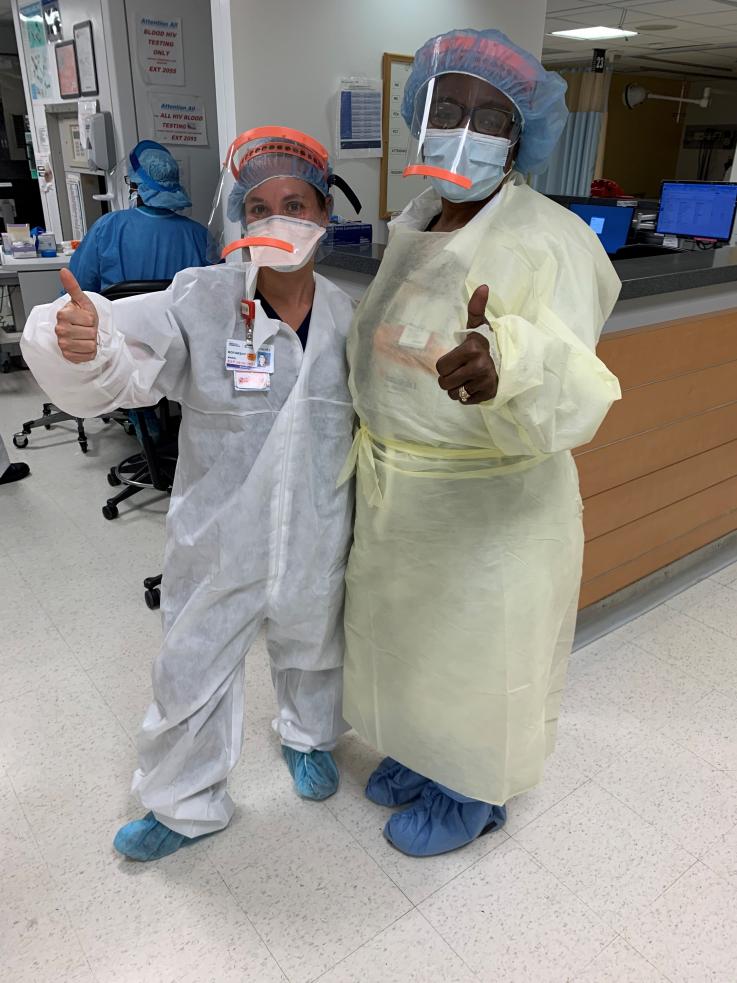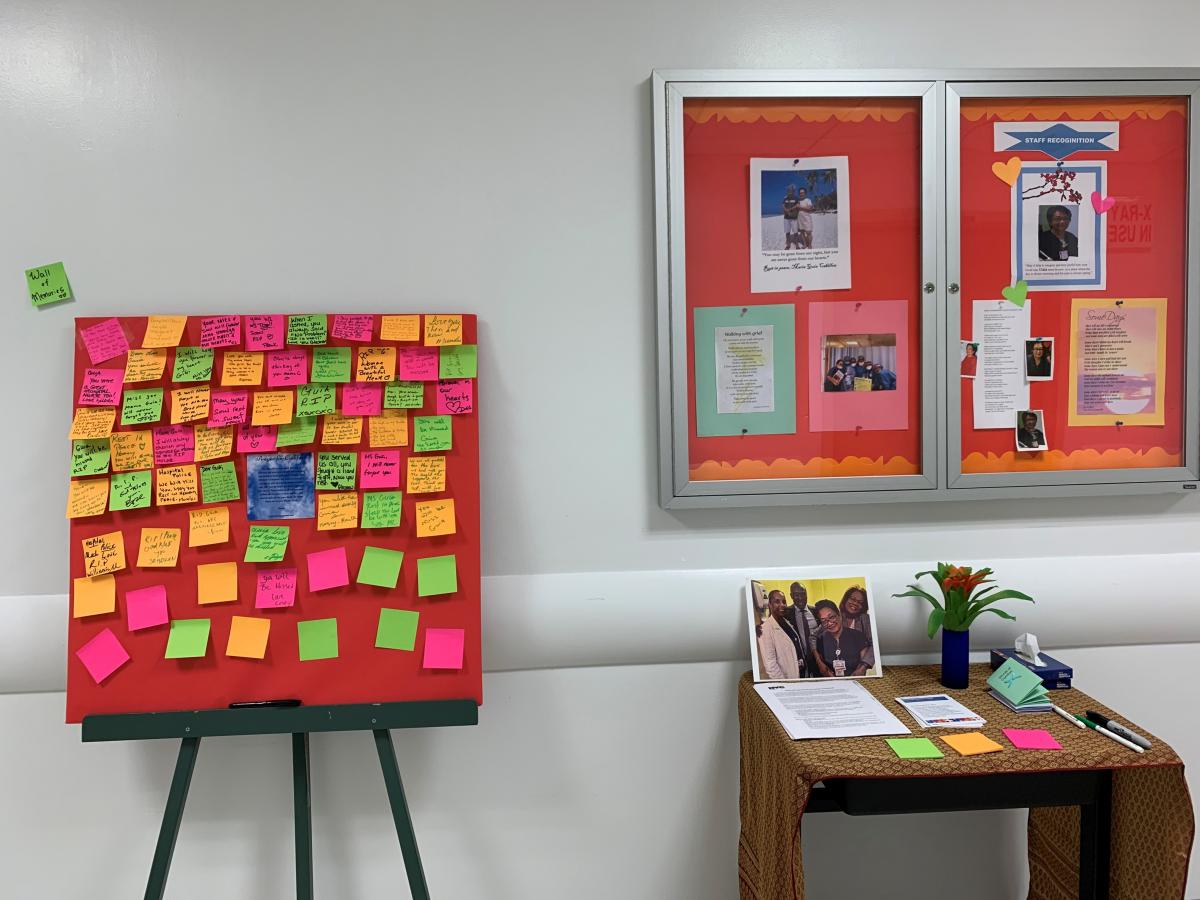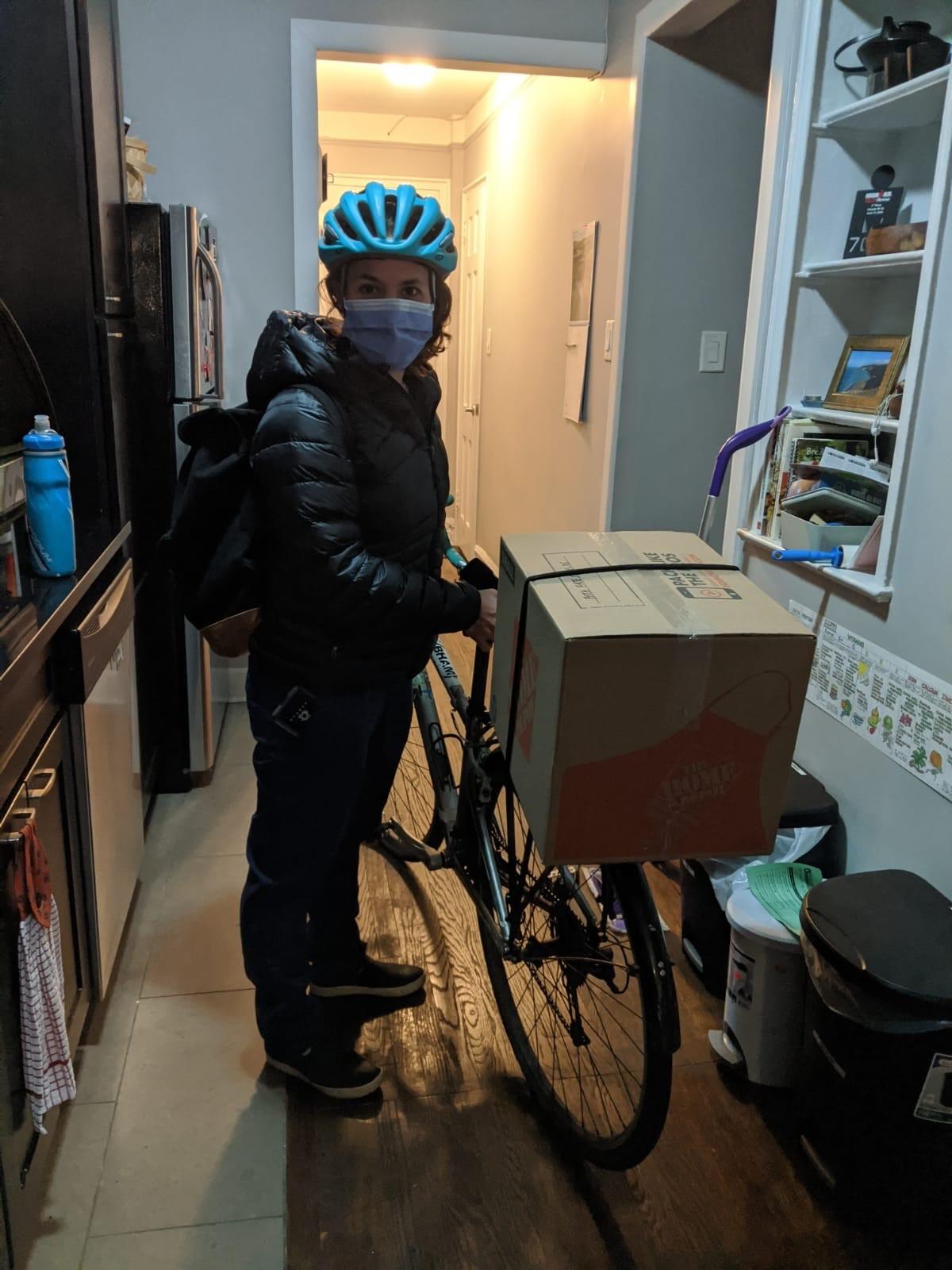
By Mariel Boyarsky (MPH, 2015)
Mariel Boyarsky graduated from the University of Washington in 2015 with a Master of Public Health in Global Health. After completing nursing school, she began working at Kings County Hospital in Brooklyn, New York in 2019. This is Mariel's firsthand account of working in the hospital during the COVID-19 pandemic.
I was driving back to Brooklyn from a New Jersey beach with my partner and our new dog when I got a text from a coworker: “Guia died.” Guia was Maria Guia Cabillon, one of the head nurses for the night shift at the large, Level 1 trauma center emergency room in Brooklyn where I work. She had been out the past several weeks with a diagnosis of COVID-19. In fact, much of our staff has been out - some are sick with manageable symptoms and self-quarantining at home, a few are hospitalized. Some of the older nurses have gone on leave, or arranged for retirement. Only Guia was in an intensive care unit, though, and when those of us still healthy and working (or recovered and working) arrived at the hospital for our shift, we would check in with each other. That’s how I found out, weeks ago, that she was intubated and breathing on a ventilator.
My reaction to the news of her death surprised me: I burst into tears. I wasn’t particularly close with Guia, but she was a force to be reckoned with in our ER. She had worked there so long, she had taught some of the older attending physicians how to draw blood and insert peripheral IVs when they were residents at our hospital, decades ago. I texted a friend who also works as a nurse with me, to check in with him. He wrote, “To work 5+ days a week for thirty years, just to die on the brink of retirement...it just feels cruel. It feels monstrously unjust.”
Everybody wants to know what it’s been like in our ER. They hear stories on the news, but they don’t know. For me, the worst days were in the beginning, before we were utterly and completely flooded with COVID-19 cases, but also before we had any sensible policies or procedures in place to handle the coming flood. Our hospital serves a marginalized population of mostly low-income people of color, and we have been chronically short-staffed and under-resourced for years. This is the context in which the global pandemic hit us.

Because we don’t have enforceable safe-staffing ratios (in other states, like California, nurses can’t be assigned more than four patients in the ER), I had ten or twelve patients in my care. About half had COVID-19 symptoms and were being tested for the disease. The other half were there for the usual assortment of complaints - chest pain, abdominal pain, very high blood sugar, alcohol intoxication. This was early March, so we knew even less about the disease than we know now. It was completely unsustainable, I was doing all of this care for five or six patients, and then on top of that I had another five or six patients that needed nursing care, as well.
I knew that model wouldn’t be sustainable, and it wasn’t. Eventually, almost all our patients were presenting with COVID-19 symptoms and the number of patients complaining of all the other things started to drop off. There were so many people, and they were so sick. They just kept coming. In the beginning, we tried to keep the people with COVID-19 symptoms in private isolation rooms with a closed door. But in our ER, we only have eight private rooms with doors. All the other spaces are shared cubicles, with a curtain separating the patients from each other, and from the nurses. When we ran out of cubicle spaces, we put patients in the hallways. It was bad - most of them needed supplemental oxygen. For the ones in the rooms or the cubicles, we could hook them up to oxygen on the wall. But we had so many patients in the hallways, and we needed to use portable oxygen tanks for them. Then we ran out of portable oxygen tanks.
I had to run around to different units, finding a spare tank of oxygen here, another one there, and bringing them back to my patients so that they wouldn’t be gasping for breath. We were totally unprepared. One night, we completely ran out of portable oxygen tanks - there were none in any of the units.

One of the earliest policy changes to happen was limiting the number of visitors in the ER, to decrease the spread of the disease. People don’t like being in the ER alone, it makes them nervous and scared. First we capped the number of visitors at one per patient, then we had a policy stating no visitors for adults, and only one parent or guardian for pediatric patients. It’s terrible for patients and their families, because the patients need to be cared for in the hospital but they don’t know when or if they will be able to see their loved ones again. One night, the clerk paged me and told me that one of my patients had two family members in the waiting room. They wanted an update on how the patient was doing, and they’d brought her phone charger. I went to the waiting room in all my personal protective equipment and found my patient’s niece and son. They were both wearing masks, their eyes wet and nervous above the bridge of the masks.
I told them everything I knew, including how they could contact the hospital by phone from the safety of their home. “She’s blind,” they told me. “She won’t ask for what she needs, she doesn’t like to be a bother. Make sure she eats something. Please.”
Before the pandemic, the doctors never intubated patients in the main ER. We have a critical care/trauma area, and that’s where we care for the sickest patients - the ones in respiratory failure, for example. But for a few weeks, that area was filled over capacity in a way I had never seen before. Rooms that typically held two patients each now held three. Stretchers were lined up in the hallways. The telltale beeping of the ventilators could be heard from every direction. We started to keep sicker and sicker patients in the main ER. When we could no longer keep a patient’s oxygen saturation up despite the maximum amount of supplemental oxygen, the doctors would intubate. It didn’t matter where the patient was.
Our patient population is pretty sick at baseline. We have sky-high rates of hypertension, diabetes, and asthma. Health literacy is low. Poverty and overcrowding are common. Some of our patients speak little or no English, others are homeless or struggle with drug and alcohol addiction. Many of these conditions are risk factors for contracting COVID-19, or for a poor clinical prognosis. When a patient’s status takes a nosedive, the health care providers dial a code on the hospital speakers to get the right help as quickly as possible. “Code 88” is the code for a respiratory emergency, such as when a patient requires immediate intubation and mechanical ventilation. We would hear it constantly. Sometimes one of my admitted patients would get a bed on one of the floors. I’d bring the patient up, or another staff member would. And a few minutes or hours later, there would be a Code 88 called for that patient. If we heard “Code 99,” it meant the patient was in cardiac respiratory arrest. I heard more “Code 88” and “Code 99” in March and April than the rest of my time in the hospital combined.
Things are much calmer now for us in the ER. The authorities say the curve has peaked in New York City, and I can feel it. They opened up quite a number of makeshift inpatient units and ICUs in my hospital, and we are able to move our COVID-19 patients out of the ER that much faster. The rate of new infections is slowing, as is the death rate. The inpatient units and ICUs are still full of sick people. Many will recover, some will die. Travel nurses from all over the country have arrived to help us out, as so many of our staff are still sick.

I don’t feel like a hero, and I certainly didn’t go into nursing to become a hero. I loved studying Global Health at UW, and I became a nurse to better understand the clinical side of health issues and get experience working directly with patients. The public health implications of this crisis are enormous, and we need smart, compassionate global health strategies to get us through. I am furious about Guia’s death - furious that we didn’t have enough staff, space, or personal protective equipment to prevent it. These are the issues - along with contact tracing, isolating sick people, and providing basic human rights during and after the crisis - that have public health solutions, and that will make the biggest impact on our communities.